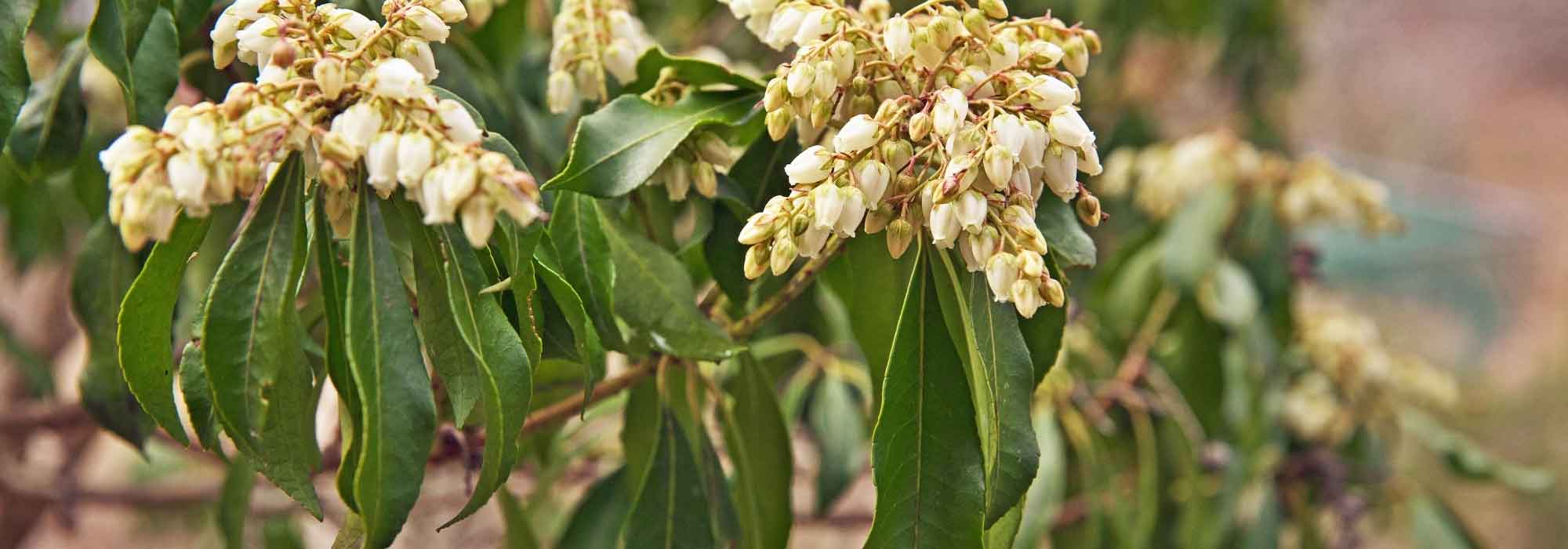
Diseases and pests of Pieris
Our tips for healthy Pieris!
Contents
The English call it “tree lily of the valley,” but we prefer to name it “Japanese Andromeda,” from where it originates. The Pieris is an evergreen shrub from the Ericaceae family, a family of flowering plants that includes blueberries, rhododendrons, and heathers, among others. Like many gardeners, you appreciate it planted in a free-standing hedge or in a shaded bed of heather soil, where the colour of its leaves and shoots brings vibrant hues. But for the past few days, you may have been despairing and asking: “Why is my Pieris losing its leaves?” “How can I care for it?” If it shows signs of decline, it may be under attack from diseases, pests, or harmful insects. Depending on the symptoms, learn to recognise and treat them using biological control, without spraying chemical products or insecticides.
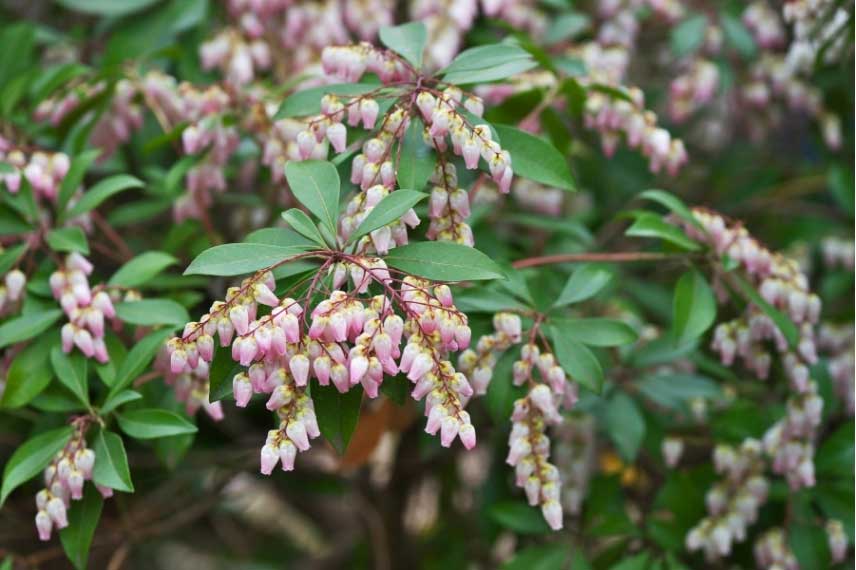
Pieris japonica
My Pieris is wilting and the leaves are drying on the stems: the culprit is Phytophthora
Pretty name for this organism living in the soil and infesting your Pieris! The leaves of your magnificent bushes start to wilt and droop like a folded parasol, then turn yellow and finally dry out on the branches. Unfortunately, the damage is done from the roots, as Phytophthora cinnamomi moves in water and is therefore more easily found in moist, acidic soils, which Pieris prefers. This pathogenous can also affect conifers, other Ericaceae such as heathers, rhododendrons, or azaleas, as well as oaks or chestnuts. Unfortunately for your beautiful Andromedas, there is no curative treatment available. It is therefore essential to be very vigilant about drainage when planting and to avoid overwatering in summer, as humidity and heat favour the development of the fungus. If the damage is done, remove and burn the affected plants without hesitation, taking care to avoid spreading the contaminated soil. Dig a hole where the soil has been in contact with the infested plant and dispose of it. Leave the hole open for a season to promote drying, then fill it back in with healthy soil. If you wish to replant in the same spot, choose a plant that is resistant to this pathogenous. Don’t forget to disinfect your tools (pruning shear, spade… and your boots if they have been in contact with the soil).
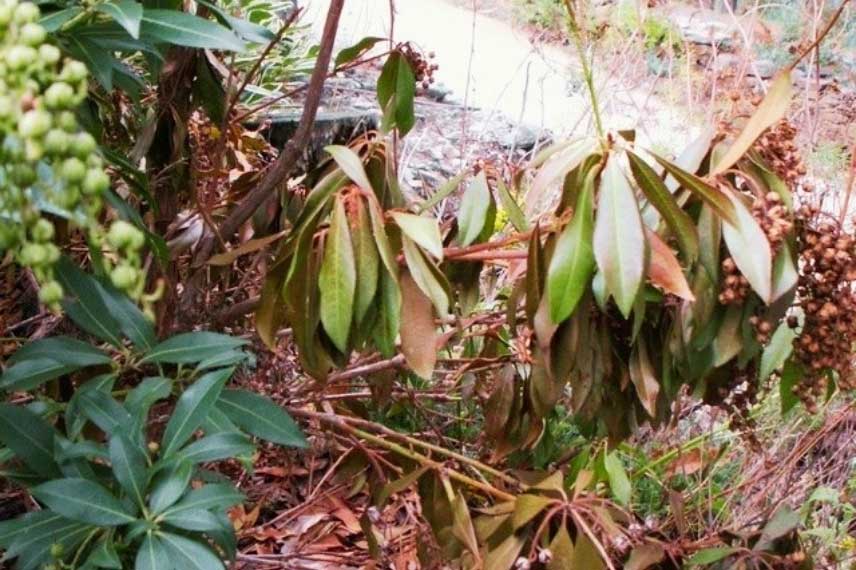
Pieris affected by Phytophthora cinnamomi
My Pieris has grey rot: the culprit is grey rot!
This fungus develops when climatic conditions are favourable and emits spores that disperse through wind, rain, insects, or… gardeners! In spring, the spores of this parasitic organism, sweetly named Botrytis cinerea, germinate on the plant and penetrate it to extract the nutrients and water it needs. In autumn, infested plants display a grey-black rot, which is actually a formation of sclerotia (small clumps of mycelium formed by certain fungi for protection) that are aggregated and hard, particularly visible on the buds and plant debris. In the following spring, these sclerotia form mycelium and spores that will again infest other plants. The spread of grey rot occurs mainly between 15 and 25°C with high humidity in the air. Therefore, it is essential to avoid overhead watering, promote air circulation through pruning – which should be avoided in rainy weather – and prevent overly dense plantings. It is also important to avoid excess nitrogen, which favours the development of grey rot.
Discover other Pieris
View all →Available in 0 sizes
Available in 3 sizes
Available in 1 sizes
Available in 2 sizes
Available in 1 sizes
Available in 1 sizes
Available in 2 sizes
Available in 1 sizes
Available in 1 sizes
Available in 1 sizes
My Pieris has black spots: the culprit is a fungal disease
It is quite common for the foliage of your Pieris to show black spots. This is a cryptogamic disease caused by a certain fungus: Phyllosticta maxima. To tackle it, the best approach is to remove the spotted leaves and dispose of them. You should also reduce watering and possibly apply a preventative fungicide such as Bordeaux mixture if the issue persists.
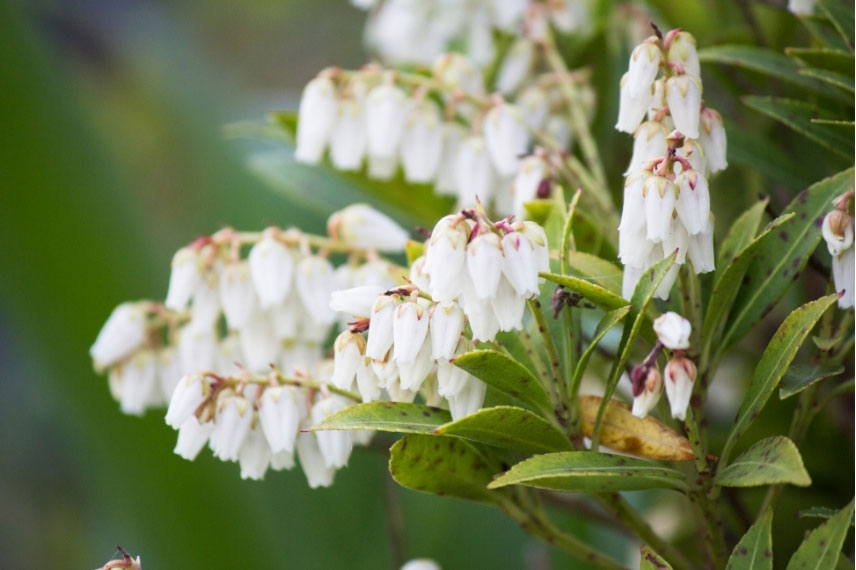
Black spots caused by the fungus Phyllosticta maxima
My Pieris is weakening and has sooty mould: the culprits are the whiteflies!
Whiteflies, also known as aleurodes, are cute little flying white insects, measuring 1 to 3mm. They feed on Pieris (but not exclusively), which weakens the plant. The honeydew produced by the insect also becomes covered in sooty mould, leading to a decrease in photosynthesis. To get rid of them, and especially to clear your Pieris, you should ensure to eliminate any potential adventive plants that whiteflies love (such as amaranth, white goosefoot, ragwort, chickweed, etc.). Use specific sticky traps to attract these harmful insects. You can also use the predatory bug Macrolophus in biological control to manage infestations. Finally, black soap will help you clean plants affected by honeydew or sooty mould.
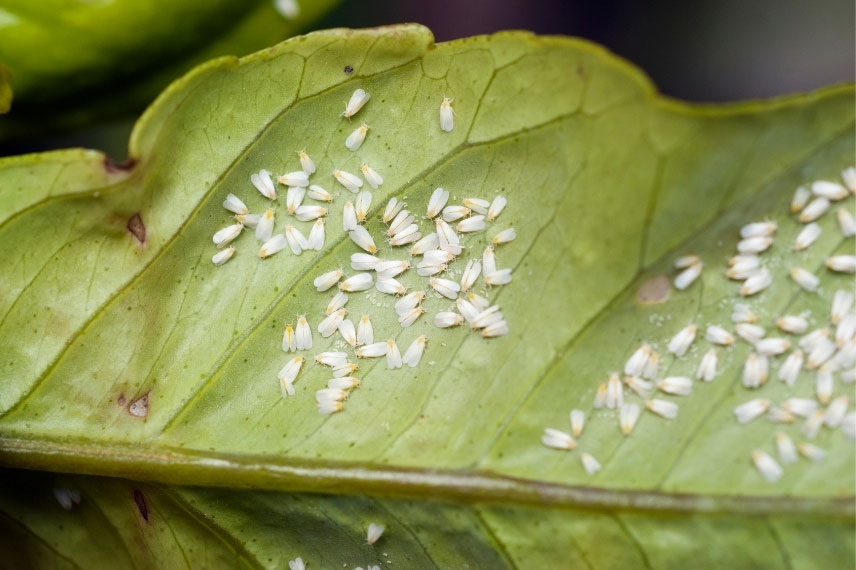
Whiteflies
To learn more, check our dedicated article: Whitefly or aleurode.
My Pieris is discolouring and has strange black and white insects: the culprit is the Asian Tiger
And yes, Tigers love Pieris! We are not talking about furry mammals, of course, but about small, flat, winged piercing-sucking insects, white and black in colour, measuring just under 4mm and with a rather unique appearance. Their scientific name is Stephanitis takeyai. Pieris tigers do not fly and can be found on the same plant year after year. On the underside of the leaves, you can find both adults and their excrement, larvae, and eggs. The insects extract liquid from the plant’s cells through their bites, causing the leaves to discolour. Sooty mould (a fungus that develops, leaving a blackish substance on the top of the leaf) can develop due to these insects, also reducing the gas exchanges necessary for the plant. To prevent these insect attacks, it is important to avoid overly systematic pruning of Pieris, as the sap generally attracts piercing-sucking insects. However, it is essential to remove and burn infested shoots and encourage the development of natural predators, such as lacewings or ladybirds. To achieve this, you should promote biodiversity in the garden and refrain from using pesticidal products!
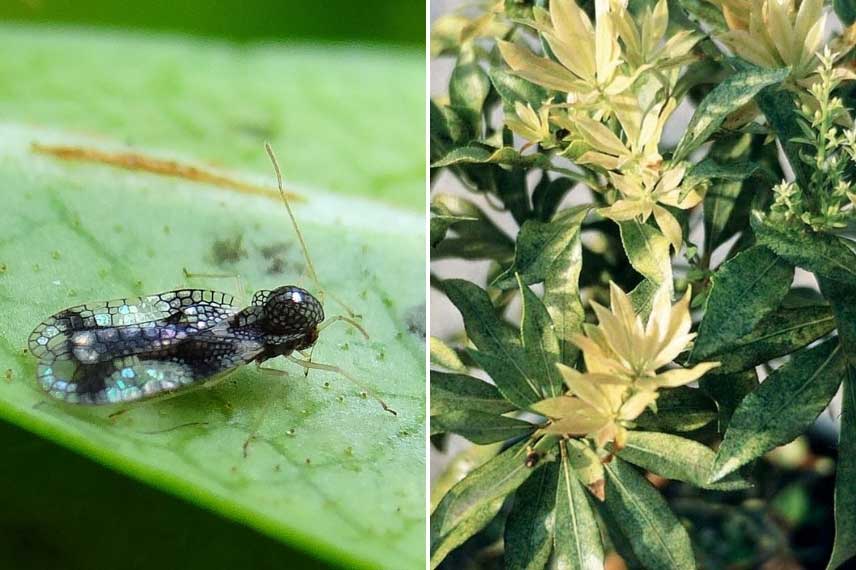
Pieris tiger (Stephanitis takeyai) and infested plant
The leaves of my Pieris are yellowing between the veins: the culprit is lime!
Pieris being a heather soil plant, it thrives in acidic soil. An excess of active lime in the soil can cause chlorosis, which complicates the plant’s assimilation of iron and leads to a failure in photosynthesis. The leaves lighten, then turn yellow while the veins remain green. First, it is essential to reserve Pieris for heather soil beds. When planting, mix heather soil with garden soil if the latter is not sufficiently acidic. If chlorosis is established, you can mulch with pine bark and apply heather soil on the surface, but this solution will not be satisfactory in the medium term as the roots will still be in contact with the lime in the soil.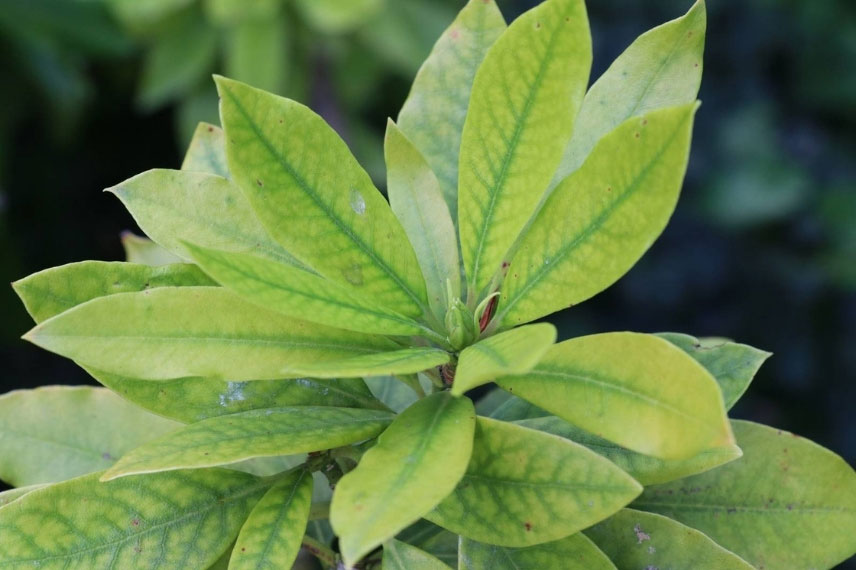 Leaf depigmentation due to chlorosis
Leaf depigmentation due to chlorosis
- Subscribe!
- Contents
.](https://en.promessedefleurs.eu/blogwp/wp-content/uploads/2021/10/maladies-parasites-pieris.jpg)































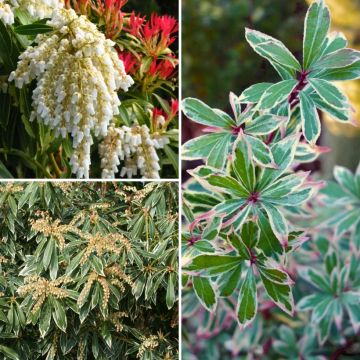
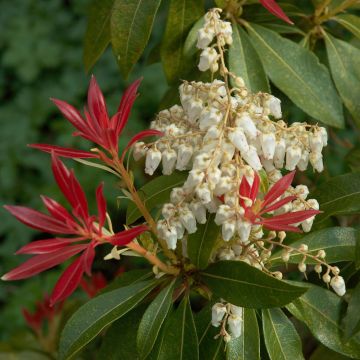
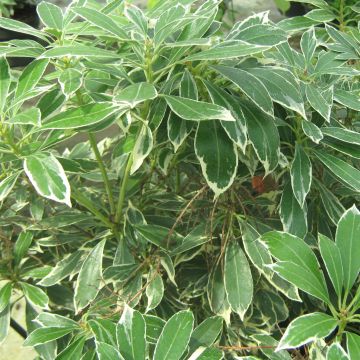
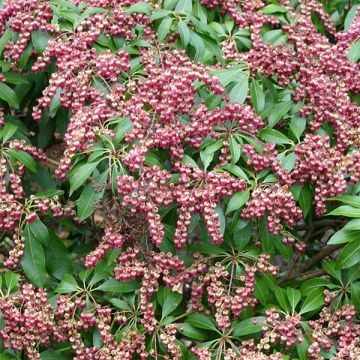
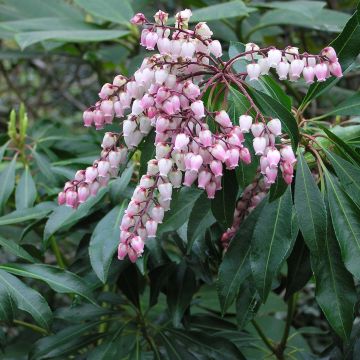
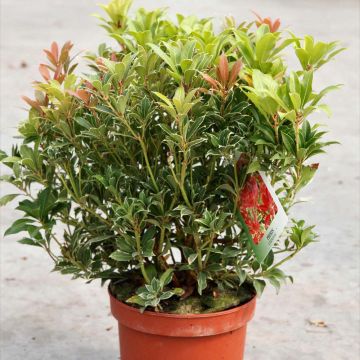
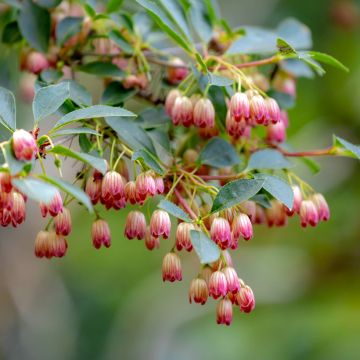
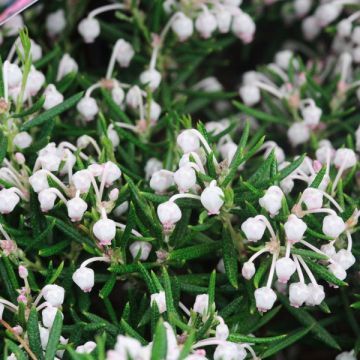
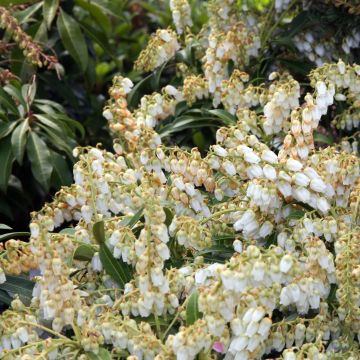
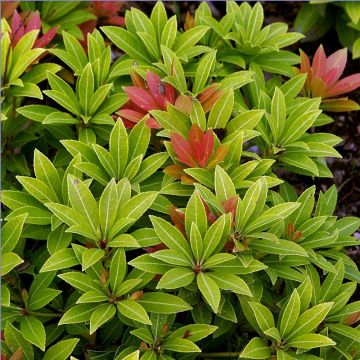
Comments